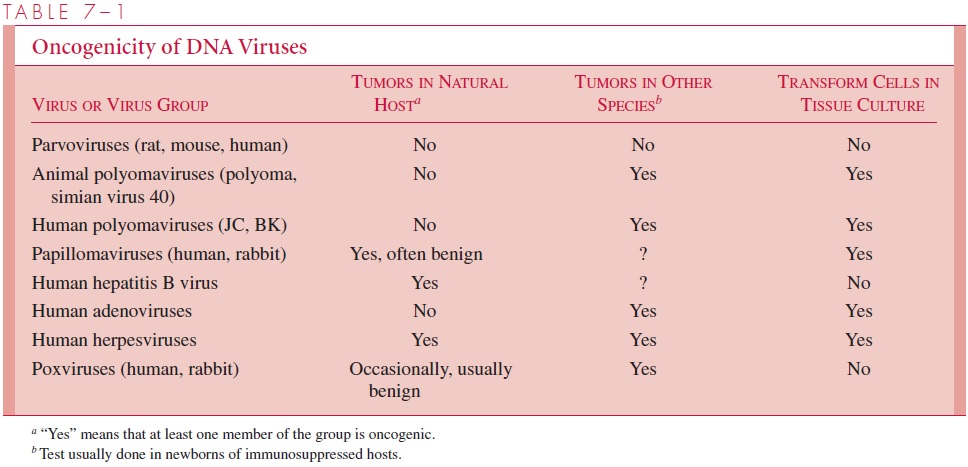Chapter: Medical Microbiology: An Introduction to Infectious Diseases: Viral Genetics
Transformation by DNA Animal Viruses
Transformation by DNA Animal Viruses
The oncogenic potential of animal DNA viruses is summarized in Table 7 – 1. All known DNA animal viruses, except parvoviruses, are capable of causing aberrant cell prolifera-tion under some conditions. For some viruses, transformation or tumor formation has been observed only in species other than the natural host. Apparently infections of cells from the natural host are so cytocidal that no survivors remain to be transformed. In addi-tion, some viruses have been implicated in human or animal tumors without any indica-tion that they can transform cells in culture.

In nearly all cases that have been characterized, viral transformation is the result of the continual expression of one or more viral genes that are directly responsible for the loss of growth control. Two targets have been identified that appear to be critical for the transforming potential of these viruses. Adenoviruses, papilloma viruses, and simian virus 40 all code for either one or two proteins that interact with the tumor suppressor proteins known as p53 and Rb (for retinoblastoma protein) to block their normal function which is to exert a tight control over cell cycle progression. The end result is endless cell cycling and uncontrolled growth.
In many respects, transformation is analogous to lysogenic conversion and requires that the viral genes be incorporated into the cell as inheritable elements. Incorporation usually involves integration into the chromosome (eg, papovaviruses, adenoviruses, and retroviruses), although the DNAs of some papillomaviruses and some herpesviruses are found in transformed cells as extrachromosomal plasmids. Unlike some of the temperate bacteriophages that code for the enzymes necessary for integration, papovaviruses and adenoviruses integrate by nonhomologous recombination using enzymes present in the host cell. The recombination event is therefore nonspecific, both with respect to the viral DNA and with respect to the chromosomal locus at which insertion occurs. It follows that for transformation to be successful, the insertional recombination must not disrupt a viral gene required for transformation. In summary, two events appear to be necessary for viral transformation: a persistent association of viral genes with the cell and the expression of certain viral “transforming” proteins.
Related Topics